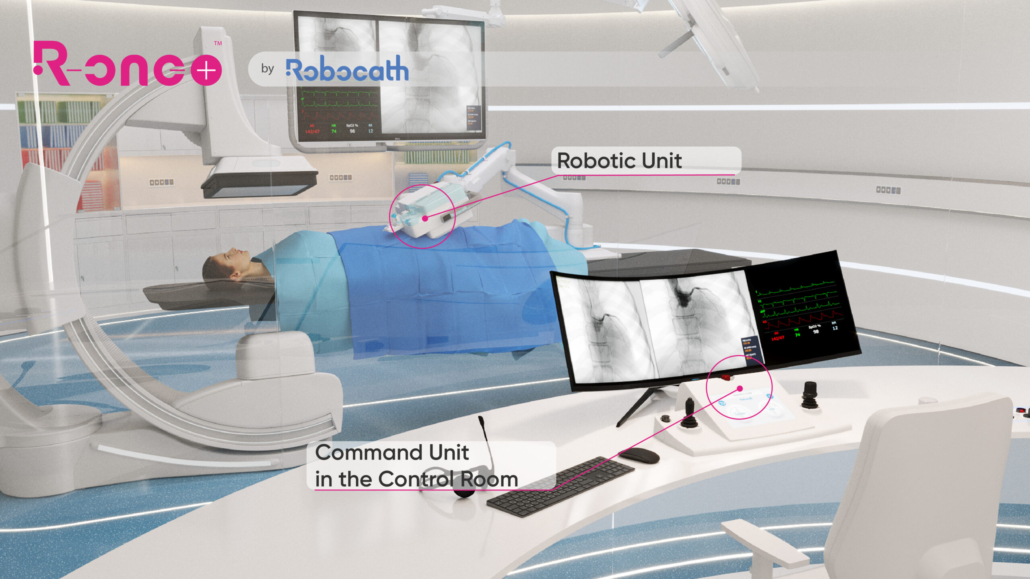Robocath introduces new robotic platform R-One+ for interventional cardiology
Robocath, a company that designs, develops and commercializes smart robotic solutions for the treatment of cardiovascular diseases, has introduced its latest robotic platform – the R-One+.
The R-One+ robotic solution allows the interventional cardiologist to perform coronary angioplasties by controlling the devices using an integrated control command unit located in the cathlab or in the control room. This creates two main benefits: firstly, the system protects the cardiologist and the medical team against radiation-induced injuries, and secondly it makes the PCI procedure easier and safer. With the R-One+ cardiologists can perform enhanced hand gestures with even greater precision and in more comfortable working conditions, all of which benefits the patient.
“For the first time, I was able to perform several robotic angioplasties from the comfort of my chair in the control room, where I was completely shielded from X-rays and could dispense with my lead apron. I also benefited from the excellent visibility on the radioscopy and haemodynamic monitoring screens. This new set-up has changed the way we organize our procedures and has given nursing staff the opportunity to develop new skills. This new approach has also enabled doctors to shift their focus back to their core activities and to perform procedures in complete safety and with millimetre precision. I’m excited to incorporate this new robotic technology into my day-to-day work. Without doubt, it opens up some new and extremely promising avenues for the treatment of cardiovascular diseases, especially in the case of long and complex procedures,”
said Dr Mohammed Nejjari, interventional cardiologist at the Centre Cardiologique du Nord (CCN) in Saint-Denis, France.Prof. Michael Haude, interventional cardiologist at the Lukaskrankenhaus hospital in Neuss, Germany, commented: “R-One+ makes it extremely easy to position devices with millimetre precision. It’s also much more comfortable to operate using robotic technology, and, as the principal operator, I am completely protected from radiation. I firmly believe that robotics has a major role to play in the transformation of interventional cardiology and the use of this technology will mark a new chapter in the history of our field.”
For more information, visit: www.robocath.com
Digital issue: Please click here for more information


